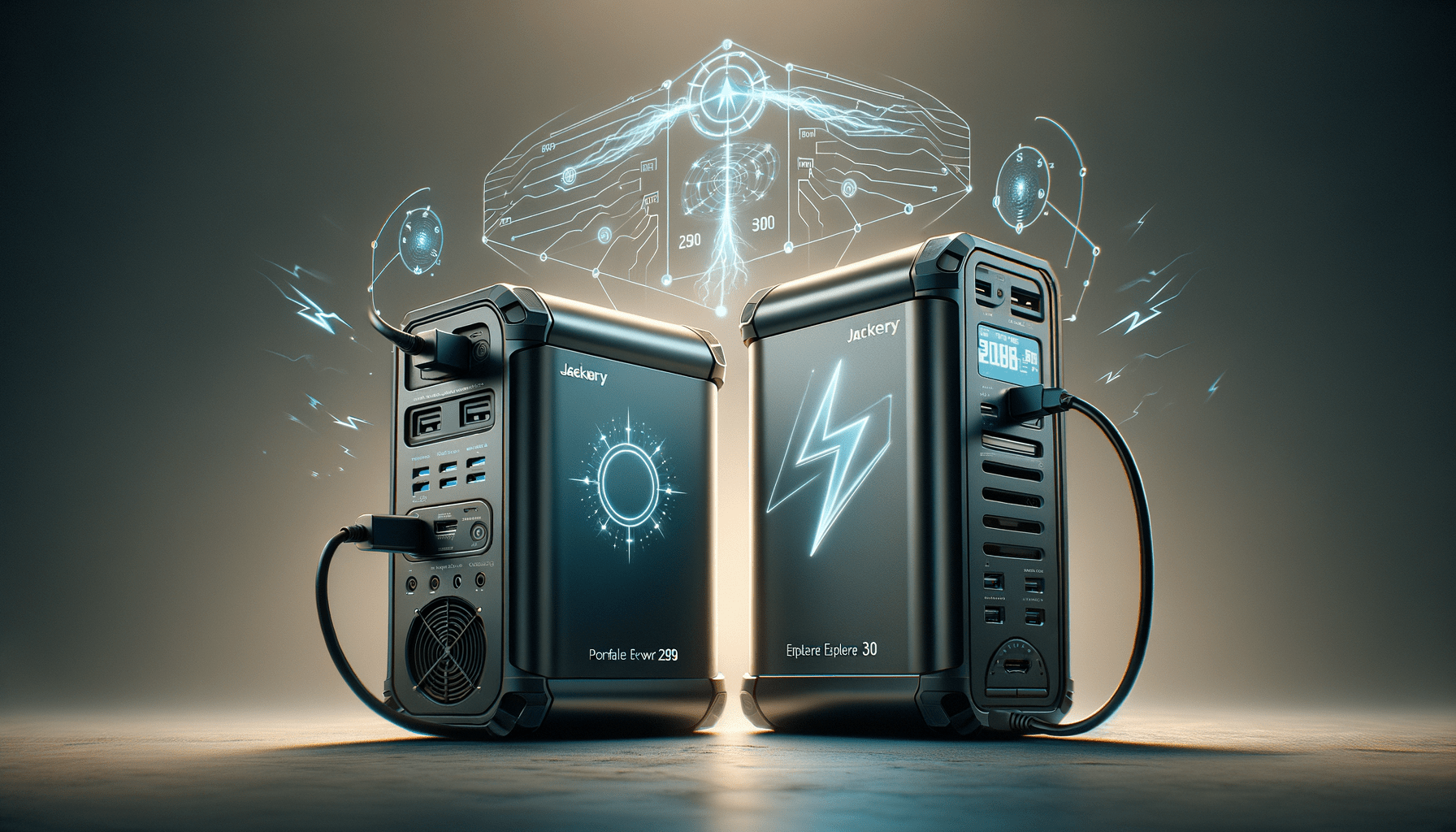As we become more reliant on technology, having a reliable power source becomes crucial, especially when we’re off the grid or facing power outages. Portable power stations like the Bluetti AC200P and the Renogy 1000 have emerged as lifesavers in such situations. But which one suits your needs the best? In this detailed tech comparison, we’ll pit these two powerhouses against each other to help you make an informed decision.
Battery and Power Capacity
Starting with the core, both Bluetti AC200P and Renogy 1000 boast LiFePO4 batteries, known for their long lifespan and safety. Bluetti comes with a 2000Wh capacity which is double of Renogy’s 998Wh. So if you need more power for longer, Bluetti might be your go-to.
| Bluetti AC200P | Renogy 1000 | |
|---|---|---|
| Battery Capacity | 2000Wh | 998Wh |
| Lifecycle | 3,500+ Cycles to 80% Original Capacity | 3000 Cycles to 80% Capacity |
| Chemistry | LiFePO4 | LiFePO4 |
Output Ports and Power
When it comes to powering various devices, outlets matter. Bluetti offers six AC outlets to Renogy’s six, but the pure sine wave inverter in Bluetti packs a 2000W continuous output compared to Renogy’s 1500W. Also, Bluetti’s surge power is a hefty 4800W against Renogy’s 3000W using iBoost mode. If you plan to run high-power appliances, Bluetti has the upper hand here.
| Bluetti AC200P | Renogy 1000 | |
|---|---|---|
| AC Outlets | 6 | 6 |
| Inverter Type | 2000W Pure Sine Wave | 1500W Pure Sine Wave |
| Surge Power | 4800W | 3000W with iBoost |
Charging and Solar Input
Charging your power station efficiently is crucial. The Bluetti can take in up to 1200W combining AC and solar, leading to a complete charge within nearly 2.5 hours. Renogy, with its iTurbo recharging technology, impressively charges up to 80% in about an hour with AC power, but solar can take a bit longer at 2.5 hours for 80% charge.
| Bluetti AC200P | Renogy 1000 | |
|---|---|---|
| Max. Input | 1200W (AC + Solar) | Not specified |
| AC Adapter Input | 500W Max. | Fast recharge with iTurbo |
| Solar Input | 700W Max. | 220W+ Solar Compatibility |
| Recharge Times AC (to 100%) | ≈4.5~5 Hours | Approx. 1.25 Hours (0% to 100%) |
Physical Dimensions and Portability
Portability is crucial for a power station. The Bluetti AC200P is heavier at 60.6 lbs compared to Renogy’s 41.0 lbs, which could be significant if you’re planning to move the unit often. Renogy’s design is compact, catering better to space-saving and lighter travel requirements.
| Bluetti AC200P | Renogy 1000 | |
|---|---|---|
| Weight | 60.6 lbs | 41.0 lbs |
| Dimensions | 16.5 x 11 x 15.2 in | 18.27 x 10.79 x 11.57 in |
Safety and Durability
The build quality speaks volumes about the reliability of a power station. Both models feature robust Battery Management Systems, but Renogy’s SGCC steel construction and exclusive cooling system give it an edge in dissipating heat and ensuring impact resistance.
| Bluetti AC200P | Renogy 1000 | |
|---|---|---|
| Construction | Not specified | SGCC Steel |
| Cooling System | Not specified | Dual fans, exclusive cooling system |
| BMS | Yes | Yes with real-time monitoring |
Additional Features and Accessories
Extra features can sweeten the deal. The Bluetti has the advantage of wireless charging pads and RV connectivity. Whereas, Renogy can connect with parallel kits allowing you to double the capacity and output. Depending on your use case—whether it’s camping or home backup—these extras can be crucial.
| Bluetti AC200P | Renogy 1000 | |
|---|---|---|
| Wireless Charging | Yes | No |
| RV Connectivity | Yes | No |
| Expandable with Parallel Kits | No | Yes |
Final Thoughts
Both the Bluetti AC200P and Renogy 1000 are capable power stations that offer unique strengths. The Bluetti offers higher capacity and power output, making it suitable for those needing robust energy solutions. Renogy, with its quicker recharge times, steel construction, and expandability factor, is ideal for quick getaways and as an emergency power backup. Choose according to your power needs, portability requirements, and the kind of devices you wish to support.




Leave a Reply